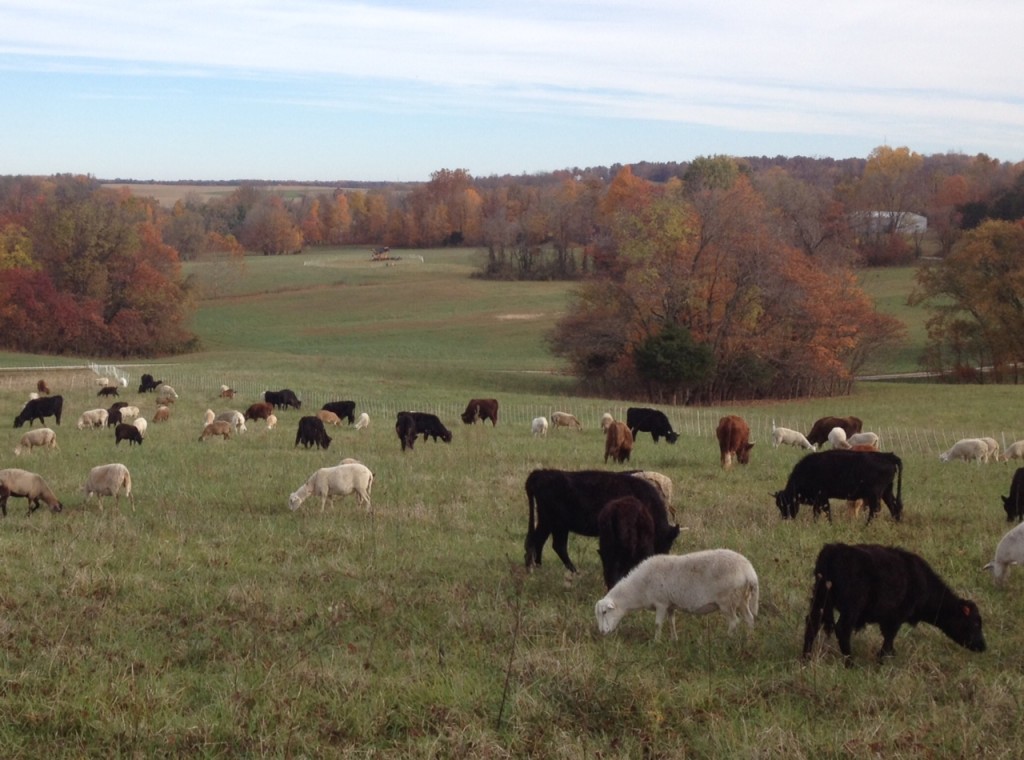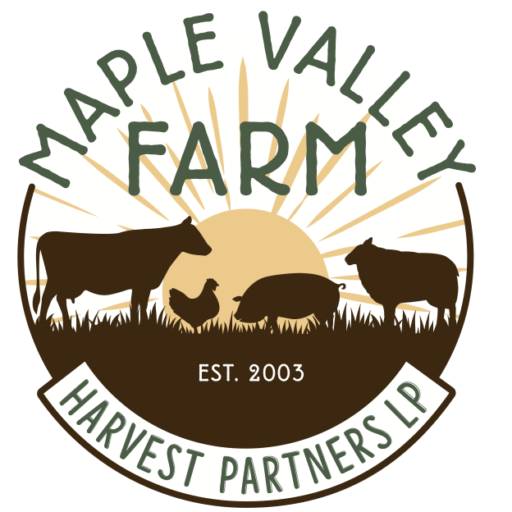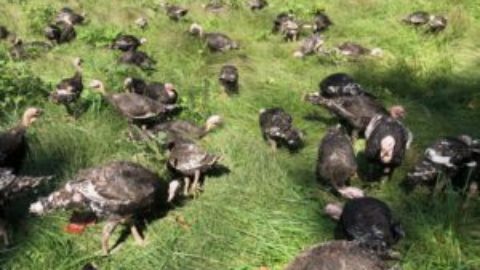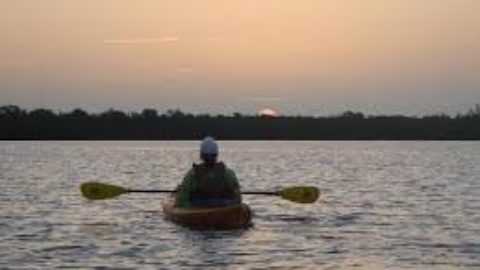
Foreground: Maple Valley Farm’s multi-species herd moved daily to fresh grass is followed across the landscape by turkeys (background)
A lot of people get the funny idea that small family farms like ours are a throwback to the kind of agriculture popular in the days of our great-grandparents or beyond.
There are some likely similarities: smaller acreages, diversified products, families working together. But there are some important distinctions that may help us better understand how we’ve arrived here and where we’re going.
First, most of the pioneers and settlers of this country brought with them practices common to Europe’s small holders. Modifications were certainly made in light of the abundant resources here, especially in the vast stretches of Western rangeland, but generally speaking, the Europeans practiced a very stationary (versus nomadic) style of agriculture. Slave plantations in the South were a scaled-up version of this approach. Crops were grown in rotation, harvested, stored and brought to the animals in their (mostly) stationary barns, pens and pastures.
Second, after WWI, the rise of fossil-fuel intensive agriculture, both for running machinery and for fertilizing crops, marked a major departure from holistic and systems-oriented approaches to farming. Gone was the need to make the farm’s enterprises synergistic and interdependent upon one another. External inputs could be used to massively multiply the farm’s outputs. Instead of farms adding value to free sunlight and recycled soil and water resources, they converted cheap oil and chemical nitrogen into food for the masses. It’s easy to see how the soil, the water, the breeding stock, indeed, the farm families themselves, became less integral to the farm. They became “pass-throughs” whose increasing depletion could always be crutched up a little more or a little longer with fossil inputs.
Nowadays, on our way to our jobs, we drive by raging brown rivers and swollen creeks each spring with hardly a thought about the megatons of soil from area crop fields and pastures being carried to the Gulf of Mexico. But somehow, the corn still grows. Somehow, the cattle still fattens.
But here’s the point. Regenerative, systems-based, holistic agriculture as we’re trying to practice it at Maple Valley Farm, is radically different. You, intentionally or not, are one of the radical revolutionaries spurring it on. We’re painfully aware of how far away we are from a truly self-sufficient, or even an interdependent, system of farming. But we can already see the early fruit of our efforts. Here is a short list of some of the seemingly simple principles upon which this radically different kind of farming is based:
-
Ecological Intensity – like exercising a muscle, the soil responds and is strengthened when we use intense, high-density animal pressure to feed the microbes.
-
Continuous Movement – in nature, nothing is static. Herds move away from manure, parasites and predators leaving behind a feast for the microbial and insect cleanup crew, which in turn, is feasted upon by birds and a fresh round of plant growth.
-
Rest – the natural corollary to intensity and movement is rest. Just as a muscle after a workout needs time to heal, regenerate and strengthen, so too the land.
-
BioDiversity – multispecies grazing and crop systems, diverse pasture and woodlands have a built-in “failsafe.” The more completely we can fill every void in the ecosystem, the stronger is that ecosystem against invasion and imbalance.
-
Closed Loops – Ideally, everything that comes from this land would return to this land (in some form.) Of all the principles listed here, this one is the biggest challenge remaining. Would it be possible to feed the chickens and pigs without outside grain and food scraps? What about the meat we are exporting? Would the partners be willing to have their ashes scattered across the farm someday? Humanure? See? It’s tough. But you have to at least admit, a farm that serves a distinct and limited group of people can at least envision a more practical application of these ideas.
What do you think? Do these “make sense” to you? Do you have a good grasp on how each of these is implemented on the farm in order to produce your food? Do you understand the impact these principles have on the environment, the animals and your health? If not, feel free to bring it up in discussion (including below.)





Recent Comments